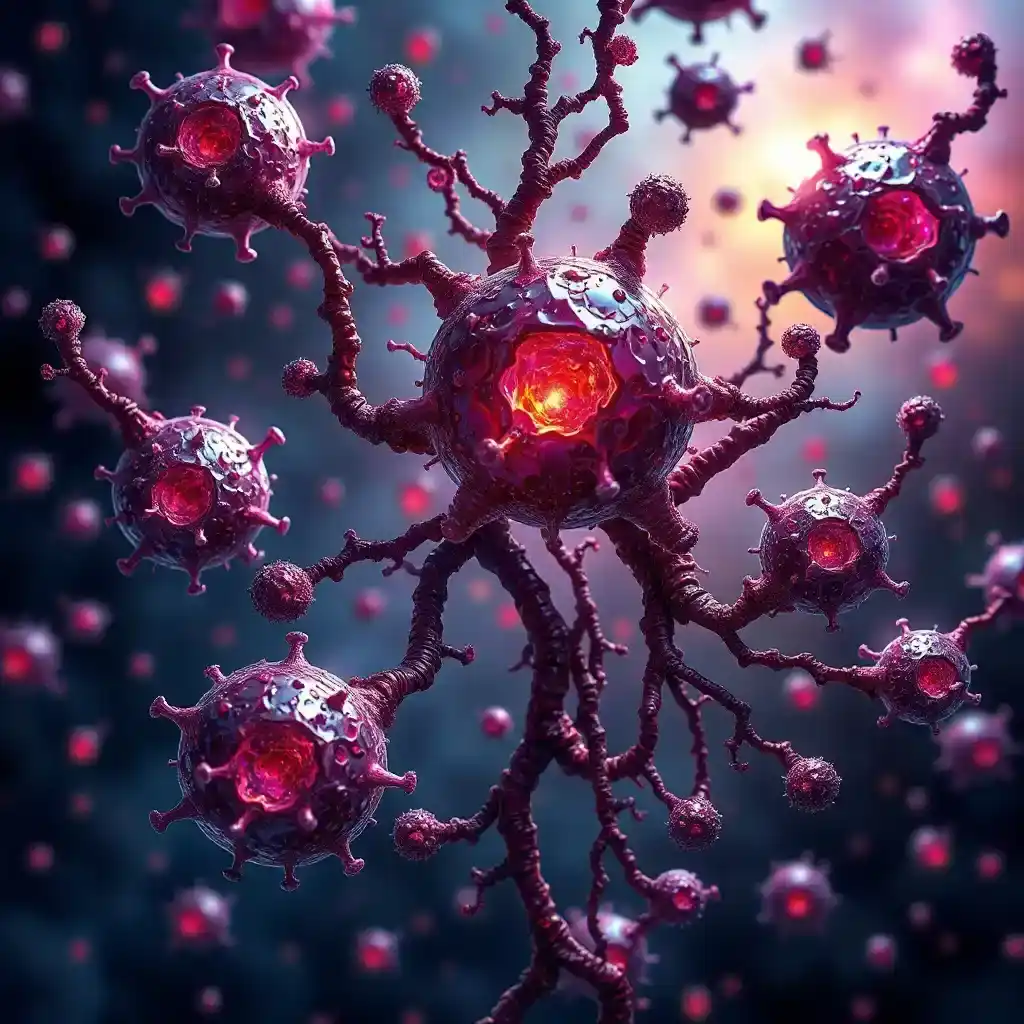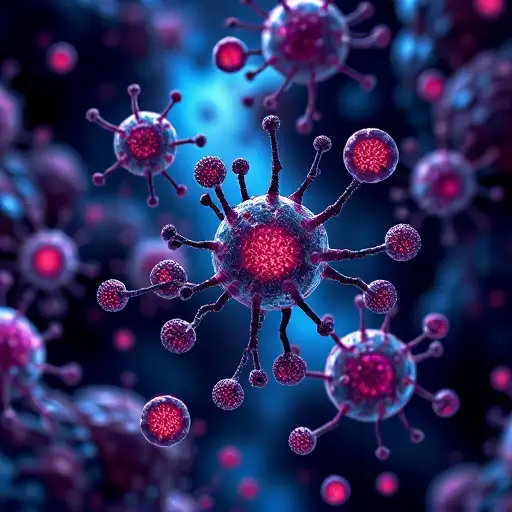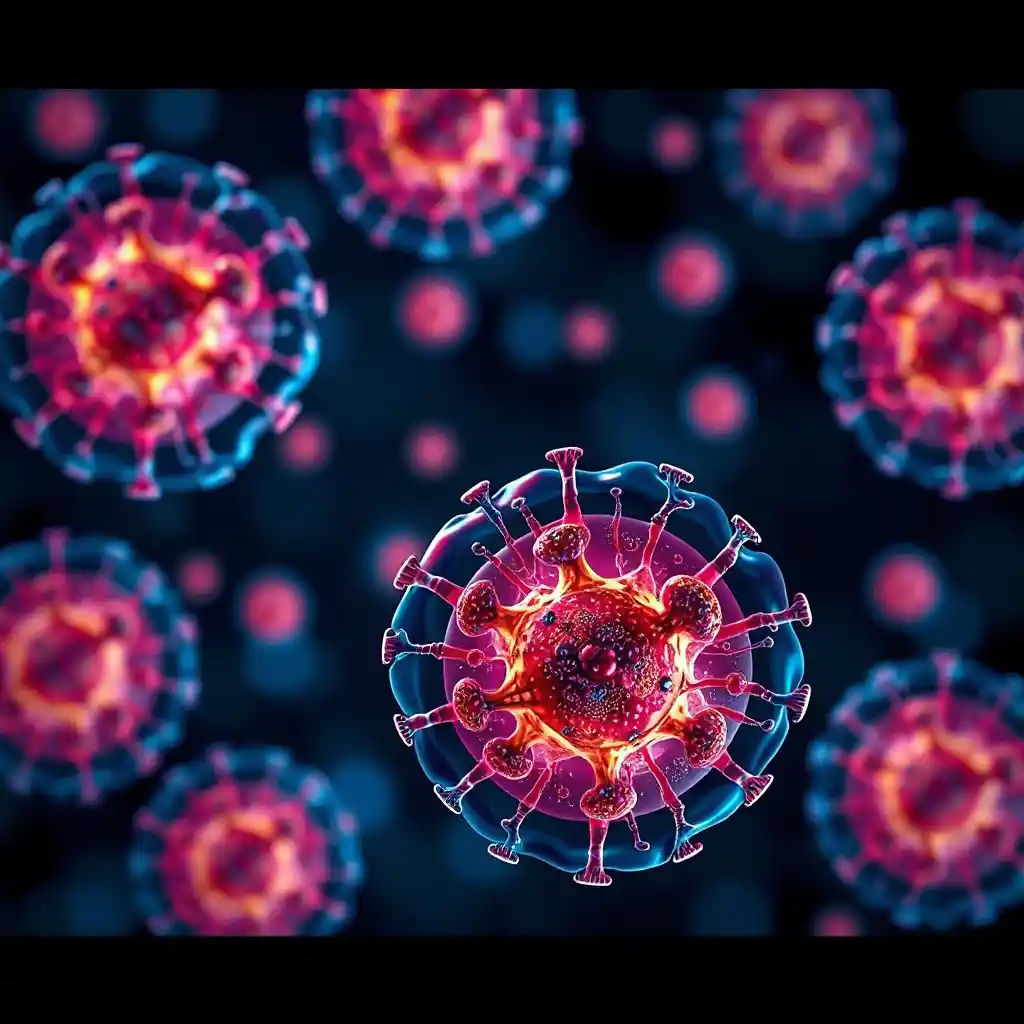What Is Transitional Cell Cancer Explained Simply

Transitional cell cancer urothelial carcinoma develops in the lining of your urinary system. These specialized cells, called urothelial cells, stretch and contract as urine passes through. This type of cancer can affect areas like your bladder, ureters, or kidneys. Early detection plays a critical role in managing this condition. Recognizing its signs and understanding its causes can help you take action sooner. By staying informed, you can better protect your health and seek timely medical advice when needed.
Key Takeaways
Transitional cell cancer, or urothelial carcinoma, mainly affects the bladder, ureters, and kidneys. Finding it early helps with better treatment.
Common signs are blood in urine, constant back pain, and peeing often. See a doctor quickly if you notice these symptoms.
Smoking greatly raises the chance of getting this cancer. Stopping smoking can prevent about 65% of cases.
Regular doctor visits and urine tests can find cancer early. This improves chances of survival and treatment choices.
Knowing your family history and risks can help you prevent transitional cell cancer.
What Is Transitional Cell Cancer Urothelial Carcinoma?
Definition and Basics
What are transitional cells and urothelial cells?
Transitional cells, also known as urothelial cells, form the lining of your urinary system. These cells have a unique ability to stretch and contract without breaking. This flexibility allows them to adapt as urine flows through the bladder, ureters, and kidneys. Transitional cell cancer develops when these cells grow uncontrollably, forming tumors.
Why are there two names for the same condition?
You might wonder why this condition has two names. Transitional cell cancer and urothelial carcinoma refer to the same disease. The term "transitional cell cancer" highlights the type of cells involved, while "urothelial carcinoma" is the medical term used by doctors. Both names describe a cancer that starts in the urinary tract's lining.
Where It Occurs
Bladder
The bladder is the most common site for transitional cell cancer urothelial carcinoma. In fact, this type of cancer accounts for about 90% of all bladder cancer cases. It typically begins in the bladder's inner lining and may remain there or spread to other layers.
Ureters and renal pelvis
This cancer can also develop in the ureters and the renal pelvis, which are parts of the urinary system that connect the kidneys to the bladder. Although less common than bladder cancer, these locations are still significant. The renal pelvis and ureters are lined with the same urothelial cells, making them susceptible to this disease.
Kidneys
In rare cases, transitional cell cancer occurs in the kidneys. It accounts for about 7% of all kidney cancer cases. When it does, it usually starts in the renal pelvis, the area where urine collects before moving to the ureters.
Causes and Risk Factors
Common Causes
Smoking and its impact
Smoking plays a significant role in the development of transitional cell cancer urothelial carcinoma. If you smoke, your risk of this cancer increases dramatically. Current smokers face more than six times the risk compared to non-smokers. The longer and more intensely you smoke, the higher your chances of developing this condition. Smoking damages the DNA in urothelial cells, which can lead to uncontrolled cell growth. Eliminating tobacco use could prevent up to 65% of cases, making it one of the most impactful lifestyle changes you can make to reduce your risk.
Chemical exposure in the workplace
Certain chemicals used in industries like leather, plastics, textiles, and rubber manufacturing can increase your risk. If you work in these environments, you may encounter dyes and industrial chemicals that harm your urothelial cells. Long-term exposure to these substances can lead to cancerous changes. Misusing pain medications over extended periods may also contribute to this risk. Protecting yourself by following safety guidelines and limiting exposure to harmful substances can help reduce your chances of developing this cancer.
Risk Factors
Genetic predisposition
Your family history can influence your risk of transitional cell cancer. If close relatives have had bladder cancer, your chances of developing this condition may double. Genetic factors, such as variations in genes that process environmental toxins, can also play a role. Some inherited conditions, like Lynch syndrome or retinoblastoma, further increase your susceptibility. Understanding your genetic background can help you take preventive measures.
Age and gender considerations
Age and gender also affect your risk. This cancer occurs more often in older adults, typically those over 55. Men are more likely to develop it than women. If you fall into these categories, regular health check-ups can help detect any early signs.
Symptoms

Recognizing the Symptoms
Blood in urine (hematuria)
One of the earliest and most common signs of transitional cell cancer urothelial carcinoma is blood in your urine, also called hematuria. This symptom may appear as pink, red, or dark brown urine. Sometimes, the blood is only visible under a microscope during a urine test. Studies show that about 20% of patients with visible blood in their urine are diagnosed with bladder cancer. If you notice this symptom, it’s important to consult a doctor promptly.
Pain or discomfort in the lower abdomen or back
Persistent pain in your lower abdomen or back can also signal this condition. This discomfort may feel like a dull ache or sharp cramps. It often occurs when the cancer affects the kidneys or ureters. Back pain that doesn’t go away, especially when combined with other symptoms, should not be ignored.
Frequent or urgent urination
You might experience a sudden need to urinate more often or feel an urgent need to go, even when your bladder isn’t full. Pain or burning during urination, known as dysuria, can also occur. These symptoms may result from irritation or blockage caused by the tumor.
Other symptoms to watch for include fatigue, unexplained weight loss, or a low-grade fever. While these signs may seem unrelated, they can indicate the presence of cancer in your urinary system.
When to Seek Medical Advice
Persistent symptoms
If you experience any of these symptoms for more than a few days, it’s time to see a healthcare provider. Persistent symptoms, such as blood in your urine or ongoing back pain, could point to a serious issue. Early evaluation can help identify the cause and lead to timely treatment.
Importance of early detection
Early detection plays a crucial role in managing transitional cell cancer urothelial carcinoma. Identifying the condition in its initial stages improves treatment outcomes and increases survival rates. Regular check-ups and paying attention to your body’s signals can make a significant difference. Don’t wait for symptoms to worsen before seeking help.
Diagnosis
Diagnostic Methods
Urine cytology and its role
Urine cytology helps detect abnormal cells in your urine. A lab technician examines a urine sample under a microscope to identify cancerous or pre-cancerous cells. This test is non-invasive and often serves as a first step in diagnosing transitional cell cancer urothelial carcinoma. While it may not detect all cases, it is particularly effective for identifying high-grade cancers.
Imaging tests like CT scans and ultrasounds
Imaging tests provide detailed pictures of your urinary system. A CT scan uses X-rays to create cross-sectional images, helping doctors locate tumors and assess their size. Ultrasounds, on the other hand, use sound waves to produce images of your kidneys, bladder, and ureters. These tests are painless and help identify abnormalities that may indicate cancer.
Biopsies for confirmation
A biopsy confirms the presence of cancer. During this procedure, a doctor removes a small tissue sample from the affected area. A pathologist then examines the sample under a microscope to check for cancer cells. This method provides the most definitive diagnosis and helps determine the cancer's type and grade.
Description | |
|---|---|
X-ray | Creates pictures of areas inside the body using energy beams. |
PET scan | Uses radioactive glucose to detect cancer cells. |
Bone scan | Identifies rapidly dividing cells in the bone with radioactive material. |
Ultrasound | Produces images of internal tissues using sound waves. |
MRI | Generates detailed images with magnets and radio waves. |
Biopsy | Removes cells or tissues for microscopic examination. |
Staging and Grading
What staging reveals about cancer spread
Staging determines how far the cancer has spread. Doctors classify it into stages 0 through IV. Stage 0 means the cancer is confined to the inner lining of the urinary tract. Stage IV indicates it has spread to distant organs. Staging helps you understand the severity of the disease and guides treatment decisions.
How grading determines treatment options
Grading evaluates how abnormal the cancer cells look under a microscope. Low-grade cancers grow slowly and are less likely to spread. High-grade cancers grow quickly and pose a greater risk. Knowing the grade helps your doctor choose the most effective treatment plan for your condition.
Treatment Options

Standard Treatments
Surgery to remove tumors
Surgery is one of the most common treatments for transitional cell cancer urothelial carcinoma. The type of surgery depends on the tumor's location and size. Doctors may perform a nephroureterectomy, which removes the kidney, ureter, and a portion of the bladder. If the tumor is small and located in the lower ureter, a segmental resection may be an option. For superficial tumors, procedures like electroresection or laser fulguration can remove the cancer while preserving healthy tissue. These approaches aim to eliminate the tumor while maintaining as much normal function as possible.
Chemotherapy and its effectiveness
Chemotherapy uses drugs to kill cancer cells or stop them from growing. It is often used when the cancer has spread beyond the urinary system. Some effective chemotherapy agents include paclitaxel, gemcitabine, and ifosfamide. These drugs can shrink tumors and improve survival rates. Chemotherapy may also be combined with other treatments, such as surgery, to increase its effectiveness. However, it can cause side effects like fatigue, nausea, and hair loss, so discussing these with your doctor is essential.
Radiation therapy for advanced cases
Radiation therapy uses high-energy rays to target and destroy cancer cells. It is typically reserved for advanced cases where surgery is not an option. This treatment can help relieve symptoms like pain or bleeding caused by the tumor. Radiation therapy is often combined with chemotherapy to enhance its effectiveness. While it can be a powerful tool, it may also cause side effects like skin irritation or fatigue.
Advanced Treatments
Immunotherapy and its benefits
Immunotherapy boosts your immune system to fight cancer more effectively. It works by targeting specific proteins on cancer cells, making them easier for your body to attack. This treatment is particularly beneficial for patients whose cancer has not responded to other therapies. Immunotherapy can improve survival rates and quality of life, though it may cause side effects like inflammation or flu-like symptoms.
Targeted therapies for specific cases
Targeted therapies focus on specific molecules involved in cancer growth. These treatments are designed to attack cancer cells while sparing healthy ones. For metastatic transitional cell cancer, drugs like gallium nitrate and pemetrexed have shown promise. Clinical trials are also exploring new targeted therapies, offering hope for patients with advanced or resistant forms of the disease. If you qualify, participating in a clinical trial could provide access to cutting-edge treatments.
Prognosis and Prevention
Understanding Prognosis
Survival rates for different stages
The prognosis for transitional cell cancer urothelial carcinoma depends on the stage at diagnosis. Early-stage cancers, such as stage 0 or I, have higher survival rates. For these stages, the five-year survival rate can exceed 90%. As the cancer progresses to stages II or III, survival rates decrease. Stage IV, where cancer spreads to distant organs, has a much lower survival rate, often below 10%. Early detection significantly improves your chances of successful treatment.
Factors influencing outcomes
Several factors can affect your prognosis. These include:
Smoking cigarettes
Long-term use of certain pain medicines, like phenacetin
Exposure to harmful dyes and chemicals in industries such as leather, textiles, plastics, and rubber
Your overall health and how well your body responds to treatment also play a role. Understanding these factors can help you make informed decisions about your health.
Prevention Strategies
Avoiding smoking and harmful chemicals
You can reduce your risk of developing this cancer by avoiding smoking. Tobacco damages urothelial cells, increasing the likelihood of cancer. If you work in industries that use harmful chemicals, follow safety guidelines to limit exposure. Wearing protective gear and adhering to workplace regulations can protect you from harmful substances.
Regular health check-ups for early detection
Regular check-ups are essential for early detection. Routine urine tests and imaging scans can identify abnormalities before symptoms appear. If you have risk factors, such as a family history of bladder cancer, discuss screening options with your doctor. Early detection not only improves survival rates but also makes treatment less invasive.
By taking these preventive steps, you can lower your risk and improve your overall health.
Transitional cell cancer urothelial carcinoma affects the urinary system, including the bladder, kidneys, and ureters. Early detection improves treatment outcomes and survival rates. You can recognize symptoms like blood in urine, frequent urination, or persistent back pain. Risk factors include smoking, exposure to industrial chemicals, and long-term misuse of pain medications.
Understanding this condition empowers you to take proactive steps. Regular health check-ups and lifestyle changes, like quitting smoking, can reduce your risk. For more information, explore resources such as What is Transitional Cell Cancer? or Bladder Cancer. Always consult a healthcare professional for personalized advice.
FAQ
What is the difference between transitional cell cancer and other types of bladder cancer?
Transitional cell cancer starts in the urothelial cells lining the urinary tract. Other bladder cancers, like squamous cell carcinoma or adenocarcinoma, originate in different cell types. Transitional cell cancer is the most common form.
Can transitional cell cancer spread to other parts of the body?
Yes, it can spread to nearby tissues, lymph nodes, or distant organs like the lungs or liver. Early detection reduces the risk of metastasis and improves treatment outcomes.
How is transitional cell cancer different in men and women?
Men are more likely to develop this cancer than women. However, women often experience delayed diagnoses, which can lead to more advanced stages at detection. Regular check-ups help address this disparity.
Are there any lifestyle changes that can lower my risk?
Yes, quitting smoking significantly reduces your risk. Avoiding exposure to harmful workplace chemicals and maintaining a healthy lifestyle also help. Regular screenings are essential if you have risk factors.
Is transitional cell cancer curable?
Treatment success depends on the stage and grade of the cancer. Early-stage cancers have high survival rates with proper treatment. Advanced cases are harder to treat but may respond to therapies like immunotherapy or targeted treatments.
See Also
Understanding Leydig Cell Tumors And Their Origins
A Simple Guide To Hepatosplenic T-Cell Lymphoma
Essential Information About Carcinoid Tumors You Need
